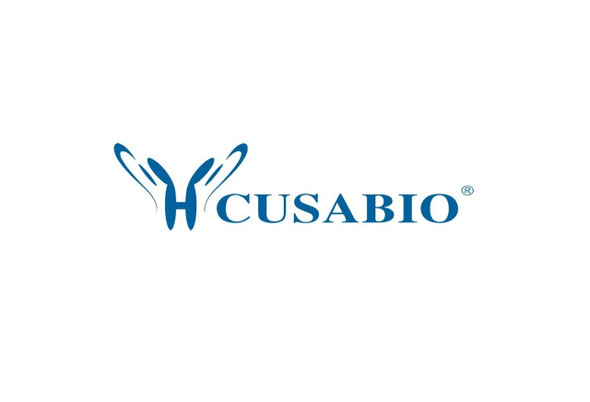Cusabio Human Recombinants
Recombinant Human ADP-ribosylation factor-like protein 6 (ARL6) | CSB-EP887945HU
- SKU:
- CSB-EP887945HU
- Availability:
- 13 - 23 Working Days
Description
Recombinant Human ADP-ribosylation factor-like protein 6 (ARL6) | CSB-EP887945HU | Cusabio
Alternative Name(s): Bardet-Biedl syndrome 3 protein
Gene Names: ARL6
Research Areas: Signal Transduction
Organism: Homo sapiens (Human)
AA Sequence: GLLDRLSVLLGLKKKEVHVLCLGLDNSGKTTIINKLKPSNAQSQNILPTIGFSIEKFKSSSLSFTVFDMSGQGRYRNLWEHYYKEGQAIIFVIDSSDRLRMVVAKEELDTLLNHPDIKHRRIPILFFANKMDLRDAVTSVKVSQLLCLENIKDKPWHICASDAIKGEGLQEGVDWLQDQIQTVKT
Source: E.coli
Tag Info: N-terminal GST-tagged
Expression Region: 1-186aa
Sequence Info: Full Length
MW: 48 kDa
Purity: Greater than 90% as determined by SDS-PAGE.
Relevance: Involved in membrane protein trafficking at the base of the ciliary organelle. Mediates recruitment onto plasma membrane of the BBSome complex which would constitute a coat complex required for sorting of specific membrane proteins to the primary cilia. Together with BBS1, is necessary for correct trafficking of PKD1 to primary cilia. Together with the BBSome complex and LTZL1, controls SMO ciliary trafficking and contributes to the sonic hedgehog (SHH) pathway regulation. May regulate cilia assembly and disassembly and subsequent ciliary signaling events such as the Wnt signaling cascade. Isoform 2 may be required for proper retinal function and organization
Reference: "Comparative genomic analysis identifies an ADP-ribosylation factor-like gene as the cause of Bardet-Biedl Syndrome (BBS3)." Chiang A.P., Nishimura D., Searby C., Elbedour K., Carmi R., Ferguson A.L., Secrist J., Braun T., Casavant T., Stone E.M., Sheffield V.C. Am. J. Hum. Genet. 75:475-484(2004)
Storage: The shelf life is related to many factors, storage state, buffer ingredients, storage temperature and the stability of the protein itself. Generally, the shelf life of liquid form is 6 months at -20?/-80?. The shelf life of lyophilized form is 12 months at -20?/-80?.
Notes: Repeated freezing and thawing is not recommended. Store working aliquots at 4? for up to one week.
Function: Involved in membrane protein trafficking at the base of the ciliary organelle. Mediates recruitment onto plasma membrane of the BBSome complex which would constitute a coat complex required for sorting of specific membrane proteins to the primary cilia
Involvement in disease: Bardet-Biedl syndrome 3 (BBS3); Retinitis pigmentosa 55 (RP55)
Subcellular Location: Cell projection, cilium membrane, Peripheral membrane protein, Cytoplasmic side, Cytoplasm, cytoskeleton, cilium axoneme, Cytoplasm, cytoskeleton, cilium basal body
Protein Families: Small GTPase superfamily, Arf family
Tissue Specificity:
Paythway:
Form: Liquid or Lyophilized powder
Buffer: If the delivery form is liquid, the default storage buffer is Tris/PBS-based buffer, 5%-50% glycerol. If the delivery form is lyophilized powder, the buffer before lyophilization is Tris/PBS-based buffer, 6% Trehalose, pH 8.0.
Reconstitution: We recommend that this vial be briefly centrifuged prior to opening to bring the contents to the bottom. Please reconstitute protein in deionized sterile water to a concentration of 0.1-1.0 mg/mL.We recommend to add 5-50% of glycerol (final concentration) and aliquot for long-term storage at -20?/-80?. Our default final concentration of glycerol is 50%. Customers could use it as reference.
Uniprot ID: Q9H0F7
HGNC Database Link: HGNC
UniGene Database Link: UniGene
KEGG Database Link: KEGG
STRING Database Link: STRING
OMIM Database Link: OMIM










